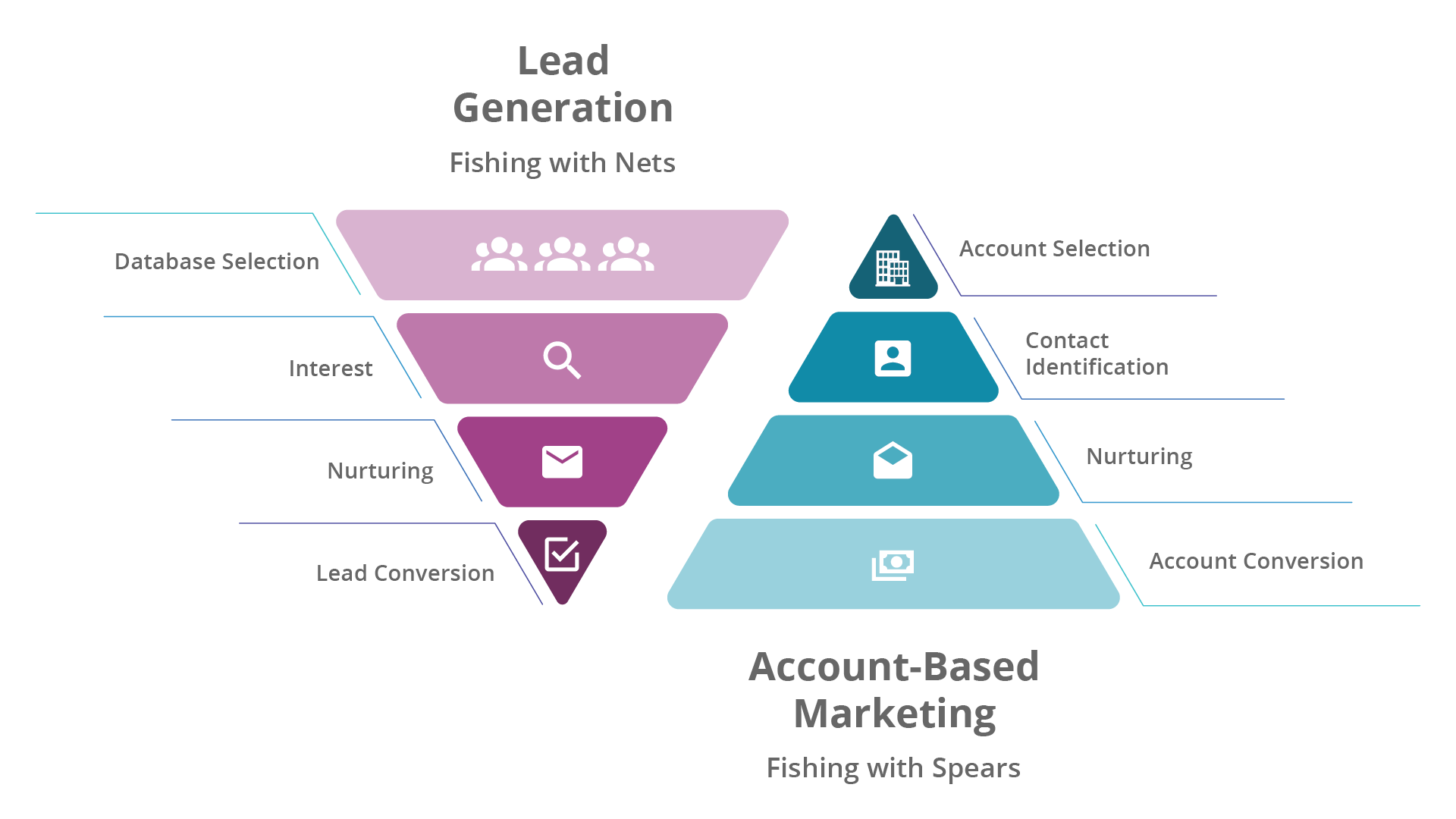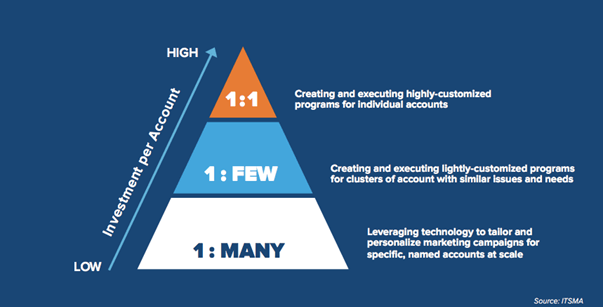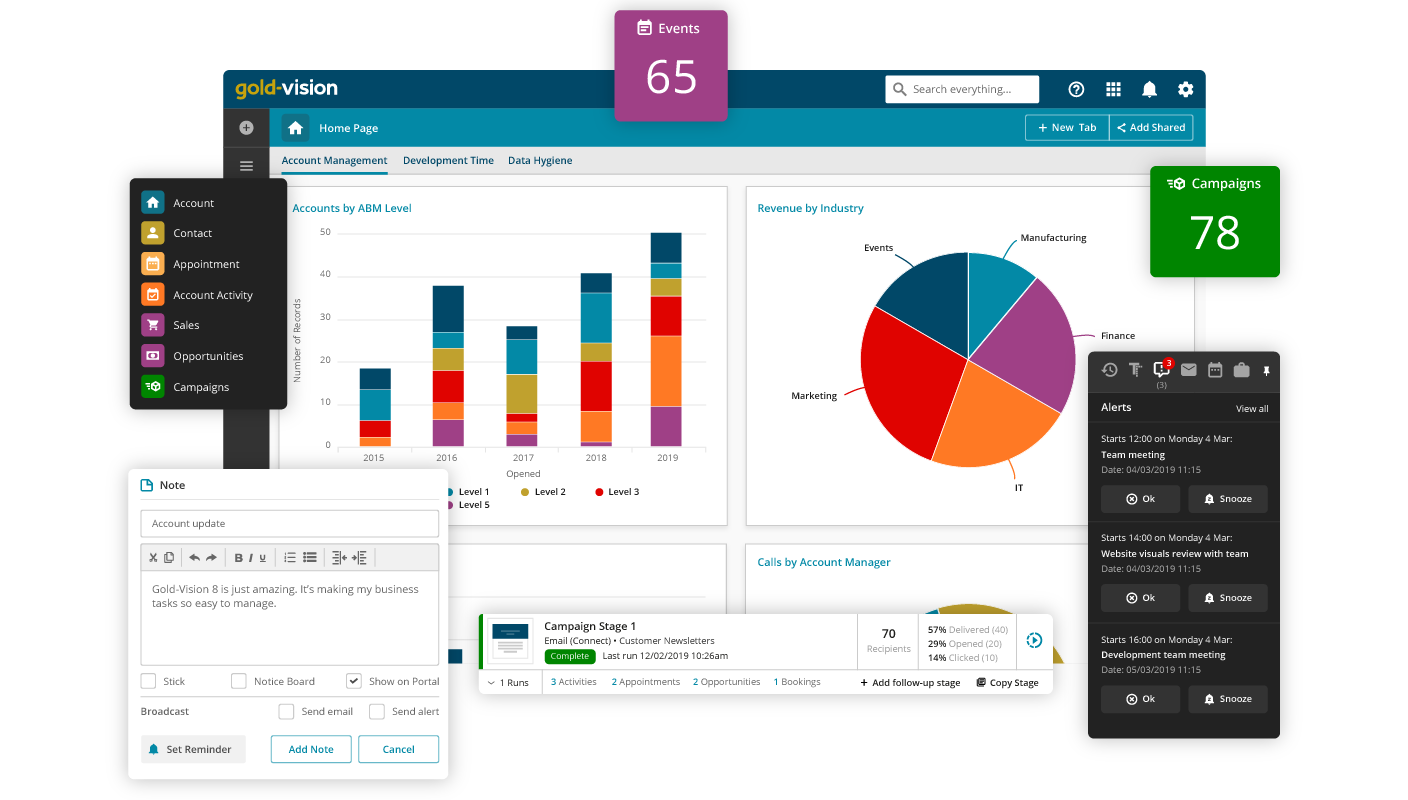CRM – the secret weapon for ABM
Once all of your data is in good order and your objectives and measures have been agreed it’s time to get to work. And with a CRM system in place, working through the ABM lifecycle is a cinch.
The 6 stages of the ABM Lifecycle
1. Identify accounts
With a CRM solution, all of your data is collated in a single location, and most CRM solutions will offer the ability to segment and categorise your data. A good CRM solution will also include a lead management module, enabling you to capture prospects at an early and unqualified stage. Your CRM solution should enable you to capture all your relationships, whether they are leads, prospects, customers or suppliers. As a result, it becomes seamless to manage your sales and marketing efforts. When all of the data is in a single location, it can be filtered or segmented to capture the contacts you want to target for communications.
2. Profile accounts
You may have selected your target accounts, but do you have the
correct contacts, or should you be targeting other contacts? This phase is all
about research and expanding what you think you know.
Whether you carry out fresh research, or use your experience of relatable customer pain points, research is key. Review your customer or prospect to understand their email tracking history, their sales history, product interest and their engagement with your previous campaigns. This should all be available through your CRM solution. The Account Management or Business Relationship managers in your business, or anyone who works with customers directly, will be able to assist with this. Your CRM system can then be used to provide invaluable data as to the key contacts at your organisations, record details as to persona’s, and manage social connections to engage with the right contacts. In addition, your CRM solution should also offer the ability to configure the contact fields you need to capture data that’s important for you.
Social engagement
Social engagement can help you truly understand the organisation in question to strengthen your message and tailor it depending on the ABM strategy you have defined. For example, one to one or one to many will determine how far you need to delve into expanding what you need to know. It can become very resource intensive and unnecessary for a one to many approach to be used when you have more than 10 accounts involved. Instead, a one to one strategy for a targeted strategic prospect may be more worthwhile in terms of time spent.
Next, think about how you can solve the issues which you discuss
and provide insights into how your product or service has helped others. This
can be achieved by referring to your organisation’s ethics and brand to keep
your message clear and understood. The sales team should be able to help with
identifying the key criteria here to assist with building your messages.
3. Create content
For the creative element, bring your sales, account managers and
marketing teams together to define the key messages for your strategy and
objective. Your messaging headlines will form the basis of your campaign or
campaigns to your targeted audience.
Support engagement
Don’t just stop with your campaign and hope to reap rewards.
Instead, build in a strategy which resonates your key messages in a number of
forms, such as: social media, blog posts, whitepapers, webinars, and tailored
email signatures that are in line with your key message. Social engagement
tools can also help at this stage to help you connect with target contacts or
share related content.
An integrated email marketing tool can really accelerate your ABM
journey, enabling you to quickly align your sales effort in the right direction
to respond with engaged contacts.
4. Launch campaign
Any communications that include both sales and marketing alignment will have been completed prior to this point, and once the campaign is launched the hard work to follow through and keep engagement really starts. Tools such as web tracking and social touch point scoring via social listening should be easily integrated with your CRM and can really help to identify engagement at this stage. An integrated email marketing tool and marketing automation are also key features to help scale your ABM campaigns where there are larger numbers of contacts.
5. Measure and repeat
Your CRM solution should offer flexible and definable reporting at each stage of your lifecycle,
not just at the end. Dashboards featuring
either charts, counts or tables will provide an insight on performance
based on your set KPI’s from your initial objectives and ROI against your campaigns should be built into your follow up
strategy.
Based on your experience first time round, adapt your approach
based on what worked well and what didn’t – these may change based on your
internal business and culture.
6. Team-based approach
Successful ABM requires a team approach that is aligned with sales and marketing efforts. Collate your team based on the ABM strategy you have chosen and select those individuals where ABM could make a difference. Start with a small team to help you identify where in your business the approach could be strengthened. Select a tool which will help you align your teams by offering the full lifecycle approach rather than multiple integrated tools used by different teams.






